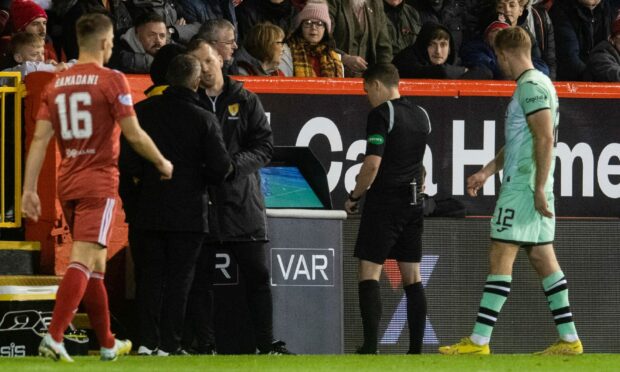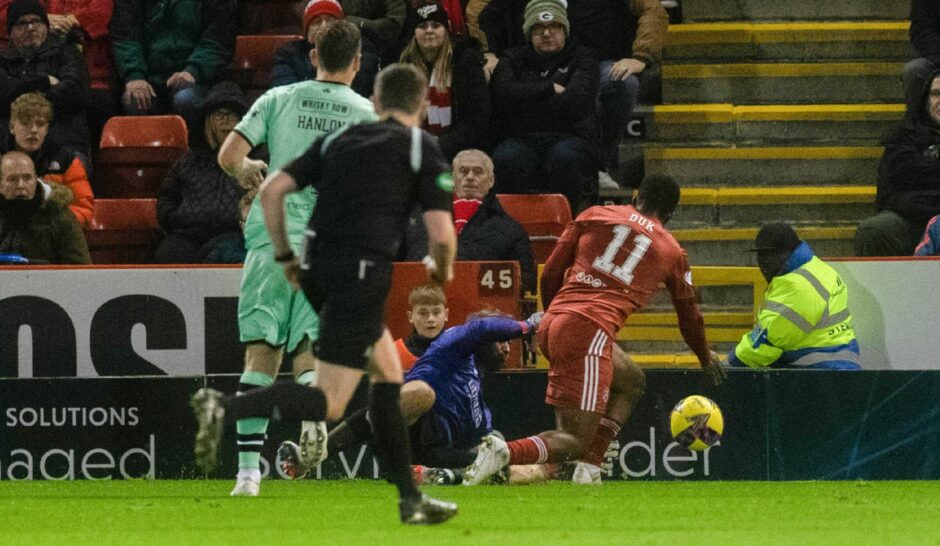Aberdeen’s meeting with Hibernian on Friday night was another game filled with VAR madness and controversy.
In a battle for third place these two heavyweights fought in an encounter that resulted in a 4-1 victory for the Dons in controversial fashion with VAR having a massive impact on the game.
With Hibs dominating most of the first half in a tight contest, the controversy kicked off when Aberdeen appealed for a penalty for a challenge on Luis ‘Duk’ Lopes from Hibernian goalkeeper David Marshall.
An initial on-field decision of offside was awarded but VAR intervened to show that ‘Duk’ had remained onside.
The next big question was whether or not he had been fouled by the goalkeeper – my honest opinion is no.
Penalty decisions like that are always difficult, if VAR was not in operation and the assistant hadn’t flagged for offside I can’t see the referee giving a penalty.
‘Duk’ certainly plays for the foul, he is already going down before a point of contact is made.
Is it enough to award a penalty?
There is contact and when you’re reviewing it in slow motion you can see it clearly with the knee of Marshall grazing the Aberdeen player’s leg.
Is it enough to award a penalty? Not for me but I can see why the referee has given it with the help of VAR and the slow motion replays that do show contact.
But there simply isn’t enough in it and I think Aberdeen were lucky to get that penalty.
The penalty from Bojan Miovski was initially saved by Marshall.
Replays and a VAR review showed the Hibernian stopper was off his line when he made the save, which resulted in Aberdeen getting the opportunity to retake the penalty.
It was the right decision for VAR to get involved there because Marshall was off his line when the kick was taken. It is a clear rule and it is good to see it being called.
I do question why the assistant didn’t call the decision, officials can’t just rely on VAR to make all the tough decisions.
VAR helped show players were onside
There was also a short VAR check after Miovski scored his retaken penalty after Marshall booted the ball off him but felt there was nothing in it to be taken too seriously.
The final big VAR moment was the Hibs goal. An on-field decision of offside was originally given in a decision nobody seemed to complain about at the time.
During the match it certainly looked as if Mykola Kukharevych was offside but VAR was able to show that Aberdeen full-back Jaydn Richardson was playing him onside.
Goals like that showcase why VAR can become an extremely useful tool.
Even with VAR disagreements about decisions will still remain, football is after all a game of opinions. The officials had plenty to mull over on Friday with VAR being used extremely well, whether or not you agree with the final decisions.
Finlay Elder has been a registered referee for six years and a category 5 official since 2019, with experience in the Highland League, juniors and Club Academy.


Conversation